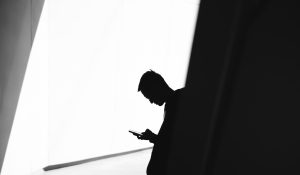One of the biggest concerns of any photographer who wants to become seriously dedicated to photography is to achieve “professional” status – or at least a meaningfully high standard in photography. To achieve this, any photographer must surpass the “entry level” label.
The world of photography lives with an identity stigma that revolves around differentiating what it means to be an “amateur photographer” and a “professional photographer”. For me, everything comes down to whether the shooter is passionate or not. It is commonly accepted that professional photographers make photography their most important income source; for amateurs, photography may not represent their major source of
It is commonly accepted that professional photographers make photography their most important income source; for amateurs, photography may not represent their major source of income, or any source of income at all. My observation here is that professional photographers sometimes don't perform passionately; and in many cases, amateur photographers have huge passion for what they do. So why worry about these distinctions? In the end, it is valid to say that a photographer is passionate, or not.

Here I want to focus on the passionate photographers – the ones who truly live and breathe photography, for whom discussing photography eternally would not be a problem at all. Recently, I came across a term called “proficiency”, and I felt it can be applied to measure the efficiency of a photographer who is passionate – because nowadays, efficiency is crucial to achieving our goals.
What is proficiency? Proficiency is a term that may sound quite fancy and even pretentious, and that's why we're going to define it first out of its photographic context. Proficient is “well advanced in an art, occupation, or branch of knowledge, any person that is competent or skilled in doing or using something”.
Proficiency is a term that may sound quite fancy and even pretentious, and that's why we're going to define it first out of its photographic context. Proficient is “well advanced in an art, occupation, or branch of knowledge; any person that is competent or skilled in doing or using something”.

Taking this to the artistic or creative plane, we can make more distinctions – “creativity” and “persistence” or “discipline”. Muses do not visit us constantly. They are not as generous as we would like, and they are not at our disposal. They can visit sporadically – and for us, the rest is pure perseverance, dedication, persistence, and discipline.
About Creativity and how to deal with it
- Battle perfectionism
I remember when I was studying for my Master's Degree, one of our professors was always encouraging us to execute things with the minimum viable effort. He had a motto that was more like a mantra: “Perfect is the enemy of the good.” Perfectionism is often found among creative
Perfectionism is often found among creative people and is not weird because creative projects require huge amounts of passion and we naturally go the extra mile when building something we feel satisfied with. But making something perfect will delay our deliverables and our efforts in a counterproductive way. We must fight perfectionism when it becomes the main reason for delayed deliveries.

- Avoid being confrontational and learn to listen
This advice is always healthy. Avoid being a confrontational person, because this could jeopardize our hardly worked networks. We need to be able to listen, especially when it comes to feedback. I don't know why many photographers feel they are under attack when they receive strong, yet objective critiques of their work. These insights can help build our career, so we need to learn to listen.
- Manage your time
Time management has been a hot topic in recent years. Everybody has a different way to account for their time. Personally, I love this beautiful and flexible tool, so I can validate my estimated times with real and valuable data. The only downside is that you HAVE to be very careful to stop the counter clock – if not, you'll have a false date.
Learn to keep a solid system to achieve goals

Here goes the second stage for becoming a proficient photographer:
- Learn to operate the camera
First things first: you need to learn how to operate your gear as if it’s a part of your body. Learning the logic behind exposure may take different amounts of time for every photographer, almost like driving for some people. Some will learn to operate a camera really fast, and some others will need more time.
- Practice daily
Learning the logic behind exposure is not enough. You need to practice, practice, practice. That’s the most important advice I can give any photographer. By practicing, you will achieve a “reflective” state in which you'll be able to expose in your mind by just watching the available light around you. This, of course, can only be achieved by practicing constantly.
- View photographs

One of the best ways to learn about meaningful photographs is to actually look at high-quality photographs. I will never get tired talking about this. You need to see great photographs to improve your own photography. By observing other photographers' work, you'll get the best teaching experiences of your career.
- Inspiration sources
Becoming proficient needs creativity, and creativity craves inspiration. The inspiration sources you need when looking at photographs must be the best of the best, and your ultimate criteria for identifying them is the feeling that these sources of inspiration will possibly affect your mind. Don't limit yourself to photography. Try to get inspired by books, movies, painting, music and other great forms of artistic expression.






